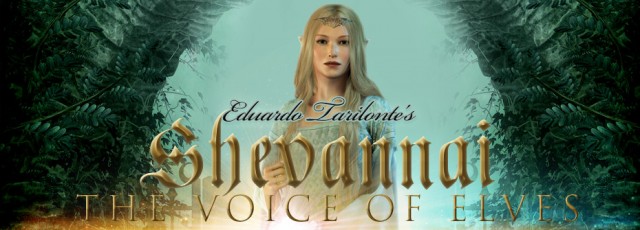The Lord of the Rings movies have come to a close, but that doesn’t mean the elf sonic action has to stop.
Yes, there really is a sound sample library called Shevannai, The Voice of Elves. It’s 3.6 GB of nothing but elven samples, adapted to a Kontakt 5 instrument.
From a technical standpoint, it shows what Kontakt can do. For any TV and film composer who suddenly gets a call from a client saying “elves!” (I’m not kidding; I’m sure that happens), it’s an emergency solution that will get you there under deadline. For the rest of us – well, we can marvel at the sheer wonder of features like:
52 phrases in Elven Language reciting some Elven poems
57 whispered phrases in Elven Language reciting some Elven poems.
110 different whispers. Divided in long and short whispers.
20 beautiful and inspiring soundscapes
You even get dedicated Inhale patches.
And – someone was genius enough to get a review copy, and it wasn’t me (darnit!), but if you want a Christmas present for the composer/sound designer who has everything – there are boxed copies, too. Check out the rather nice video walkthrough above, and if you don’t really feel an urgent need for elves, you’ll find some other nice reviews from the same gentleman.
More sounds are available on SoundCloud.
The developer/sound designer, Spain’s Eduardo Tarilonte, has loads more where this came from.
And it raises an interesting point. In sound and composition for film and TV, there is now a realm between pure sound designer and big-name film composer. Artists are honing their own skills on gigs, but can also parlay some of that into sounds for sale and additional revenue.
Because of the tight deadlines on even big-budget productions, even the likes of James Newton Howard, David Newman, Rupert Gregson Williams, and Trevor Morris have used Tarilonte’s libraries. That makes sense – building these instruments takes enormous amounts of time. (Think studio time with monks – literally.) You can read an interview from February with Tarilonte via Time + Space, a distributor of these libraries, and see how they’re used.
And, more or less, that’s how we wind up with an elven instrument. Thanks to David Abravanel for bringing this to my attention.
I now commit myself to do something in future with hashtag “elves.”
Updated: Sound Design and Orcs
We take diversity sensitivity very seriously here at CDM. It’s come to my attention that today’s coverage had a pro-Elf bias. Several Orc-oriented readers did take offense, so I want to attempt some balance here by offering details on how you would get Orc sound designs in your productions.
Note that, of course, this need not be exclusively for film production. I’m confident that 2015 could be a year where Orc vocals could climb the charts, particularly as the international music market for pop becomes more fragmented and specialized. (An Orc/EDM crossover seems a natural; I do understand there’s some fresh production coming out of Sweden and that at least a couple of Orcs are now signed to the Robert Morris Agency.)
Here’s some input on how the Orc vocals were produced.
Hint: while for Elves you can get away with a specialized Kontakt library, Orcs may require you to book a trip to the local Sea World.
David Farmer (I’ll stop being snarky, because from here on out, everything does involve the blockbuster movie):
I knew seals made vocalizations that would be believable as human-rib-cage sized sounds. One day my wife and I happened to be at the Marine Mammal Center in the Marin headlands, and it was the time of year they had lots of baby elephant seals there, and a few of them were very vocal.
… The Moria Orcs were the smallest of the orcs, and Peter’s direction for them was “sort of cockroachy”. So we recorded ourselves scrambling around wearing cleats for the movement. But the major signature sound for them was the elephant seal pups. It had a nice projecting call too that we could verb for the distant ones.
… The Uruks were much larger and more savage, and needed to have a different voice than the Moria orcs. They were based largely on sea lions, especially for the pain reactions, with tigers and leopards for the more aggressive attacks. We also recorded ourselves a few times, most all of the sound team, and we peppered in those vocalizations to add variety and a more human reaction.
… I should add that we typically didn’t layer human over animal for the same sound, they played sequentially to keep the variety up.
Don’t miss the (seriously, amazing) interview on Designing Sound with The Lord of the Rings’ David Farmer:
David Farmer Special: The Lord of the Rings [Exclusive Interview]
And yes, while I’ve said it explicitly now in today’s article and yesterday’s, you can use these kinds of inspirations on music productions, not just sound design. (Though, um, you will probably be better paid working in the film industry than releasing your all-Orc opera on Bandcamp – fair warning.)
